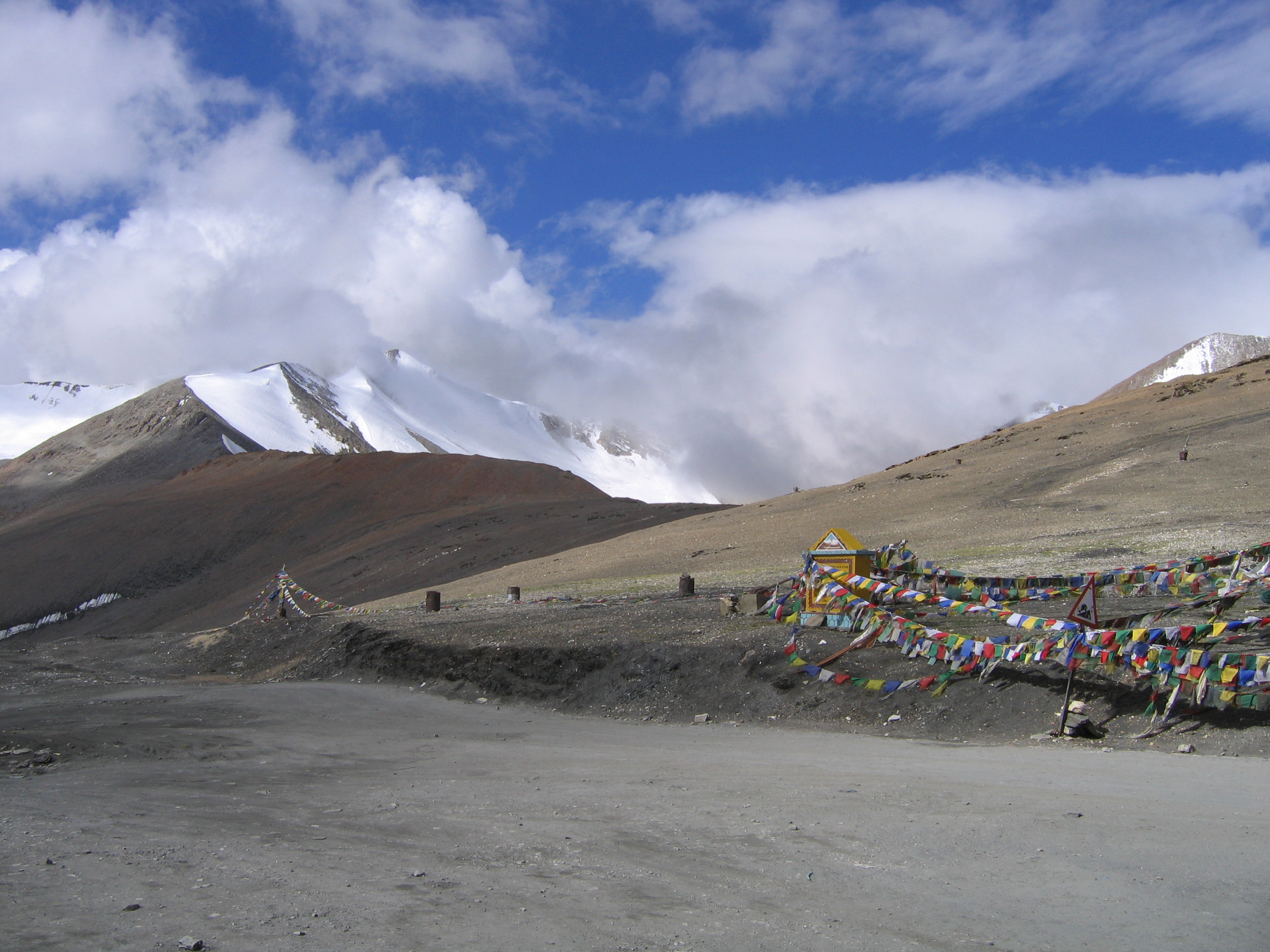Ladakh is the Land of High Passes, which were used for trade purposes. Zoji-La Pass is the gateway of Ladakh.
 Taglang La mountain pass in Ladakh. Photo Source: Creative Commons.
Taglang La mountain pass in Ladakh. Photo Source: Creative Commons.
Ladakh is a land with a minimal population, mainly with Tibetan culture, in the high ranges of the Himalayan mountains. The Ladakhi population consists of Buddhists from Tibet and Muslims almost equally.
The Tibetan border is on the eastern side of Ladakh. Leh is the most populous and most significant town in Ladakh. Kargil and Leh are the two districts in the region. The Kargil War was fought here in this region in 1999.
Many rock carvings dating back to the ‘New Stone Age’ were found in Ladakh. This suggests humans inhibited Ladakh around 10,200 BC (or earlier).
The Siachen glacier area in the northeastern corner of Ladakh is considered one of the highest battlefields of the world, with the constant conflict between the Indian and Pakistani military.
The area is diverse in flora and fauna. Many migratory birds come to this area when other parts of India experience summer. Yaks are found in large numbers in this region. Barley, wheat, peas, etc, are the primary cultivation found in this region. Vegetables are also cultivated in the region. Funnel water from the ice and snow of the Himalayas irrigates the lands! Fruits, especially apricots, are a major exporting item from this region. The area is also famous for Kashmiri woolen fabric. Famous Cashmere shawls are made from this fabric.
Ladakh is famous as an Indian tourism center known for its adventure tourism-related activities. Many trek from Srinagar to Leh, which may take around a fortnight.
Suppose non-Indian citizens wish to visit the areas of Dah-Hanu, Nubra, Pangong Lakes, Tsomoriri, Tsokar, etc. (beyond Leh). In that case, it is mandatory to approach a recognized travel agent or District collector’s office and get the necessary inner line permit. This rule, which applied to Indian citizens also, was changed on 24 April 2014 (provided you are traveling with a valid Identity document) by the J&K state government.
Zanskar alias Zahar or Zangskar is a beautiful valley in Kargil district worth visiting. It is located in the Union Territory of Ladakh in India.
How Do I Go to The Land of High Passes, Ladakh?
The conventional route is the Srinagar – Lak route. There are buses between Srinagar and Leh, operated by J&K Road Transport Corporation. These buses usually halt at Kargil for an overnight stay. J&K Road Transport Corporation also operates chartered luxury buses. Cars and Jeeps are available for hire at Srinagar (and at Lak for the return journey). Tourist operators arrange deluxe luxury buses. The distance is around 435 kilometers. This route is open from early June to November end.
Manali-Leh Road is a new road that connects the hill station Manali with Leh, which is open from mid-June to early October. Taklang-La pass, the world’s second-highest motor-able pass, is in this route at an altitude of 5,235 meters or 17,469 feet. There are many other mountain passes also in the 473-kilometer-long Manali-Leh route. Himachal Pradesh and Jammu & Kashmir road transport corporations operate ordinary and deluxe bus services on this route. The journey takes around two days, and passengers have to take an overnight stay at Serchu or Pang.
There are a few flights to Leh from New Delhi, Srinagar, and Jammu.
